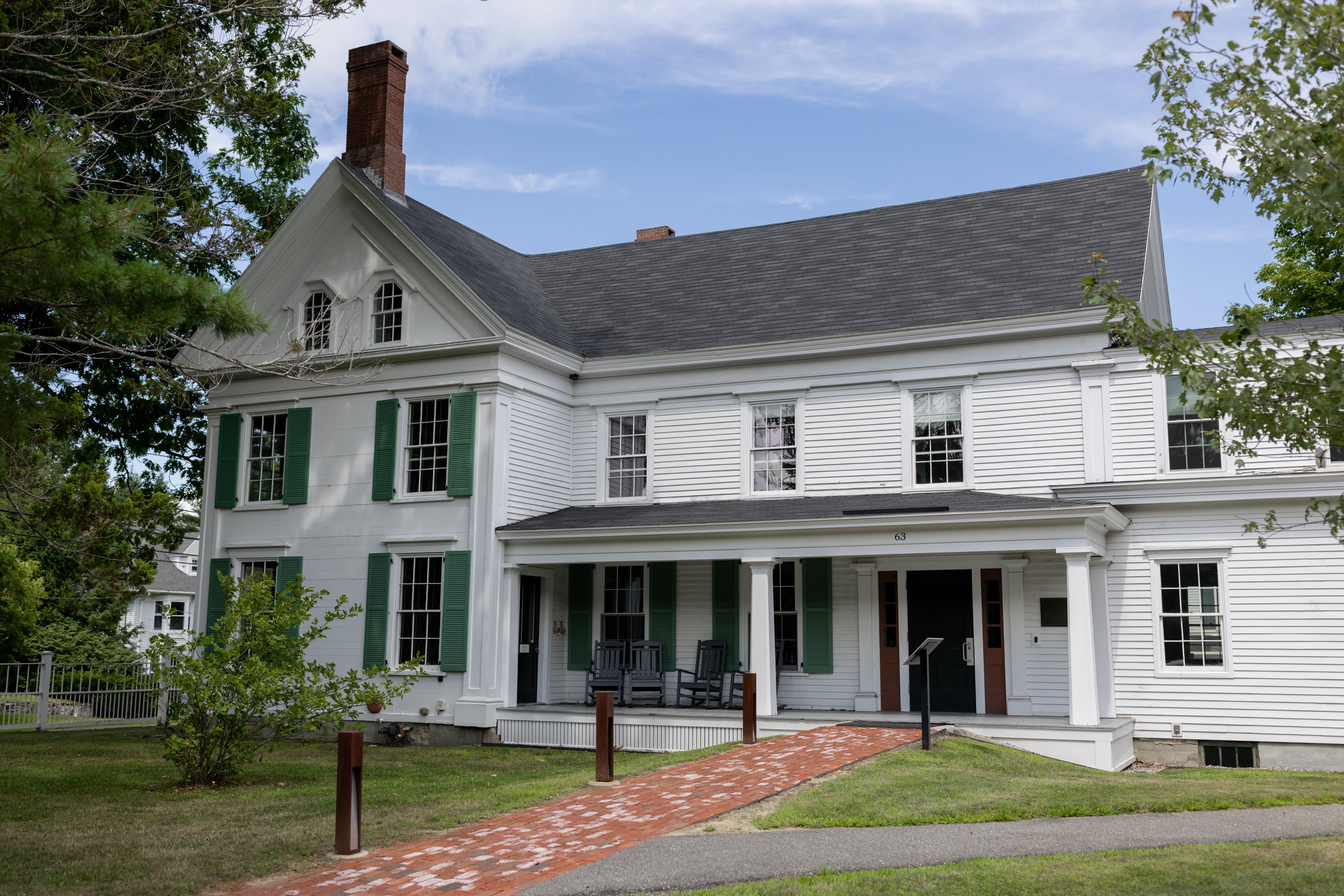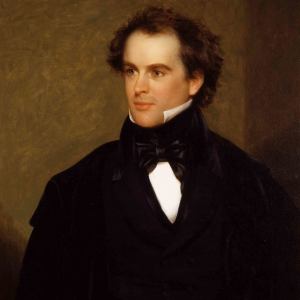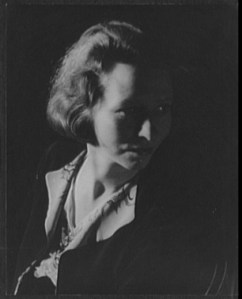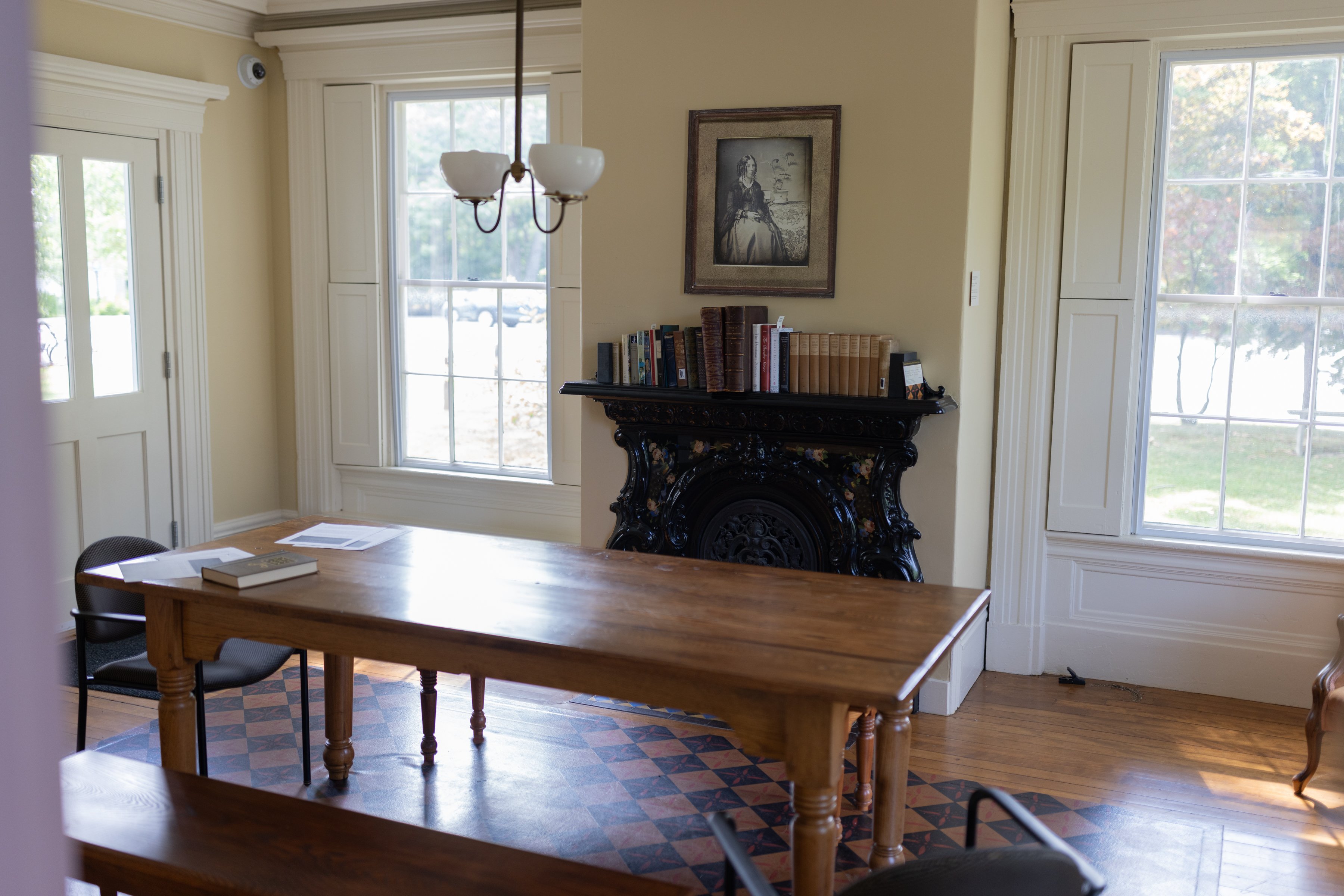In the introduction to the podcast “Dead Writers,” Tess Chakkalakal describes the homes of famous authors as “the Disneyland of literature.” Seconds later, her co-host Brock Clarke responds that visiting a deceased writer’s home is just “something you do when you’re extremely bored.”
Both are English professors at Bowdoin College in Brunswick, but they have very different views on the value of this particular type of landmark.
Chakkalakal worked to restore the historic exterior of the Brunswick home where Harriet Beecher Stowe wrote “Uncle Tom’s Cabin” in the early 1850s. Clarke wrote a 2007 novel called “An Arsonist’s Guide to Writers’ Homes in New England,” in which the homes of several famous authors are set on fire.
“It’s more interesting when people disagree than when they agree,” Clarke explained of their co-hosting partnership. “For me, the novels are enough; the poetry is enough. But I know other people have reasons for wanting to visit these places, and so one of the things I’m trying to figure out with Tess is what those reasons are.”
“Dead Writers” began airing on Maine Public Radio on July 28 and runs every Sunday at 8 p.m. through September 8. All episodes are also available on Maine Public’s website.


The Harriet Beecher Stowe House in Brunswick. Brianna Soukup/Staff Photographer
Each of the seven half-hour episodes focuses on a notable American writer – some more famous than others – and the hosts visit their home or a historic site associated with them. Each writer is either from Maine or has a connection to the state:
• Harriet Beecher Stowe wrote the anti-slavery novel Uncle Tom’s Cabin during the two years she lived in Brunswick in the early 1850s. The house she lived in is now owned by Bowdoin College and is used as offices.
• Henry Wadsworth Longfellow, one of the most popular poets of the 19th century, was born in Portland in 1807, and his family home is open to the public on tours conducted by the Maine Historical Society.
• Edwin Arlington Robinson was a poet who won three Pulitzer Prizes in the 1920s and grew up in Gardiner, where his childhood home is privately owned but has been declared a National Historic Landmark.
• Edna St. Vincent Millay also won a Pulitzer Prize for poetry in the 1920s. A writer-in-residence program is currently underway at her childhood home in Rockland.
• James Weldon Johnson, a black activist, diplomat, novelist and poet, was killed in a car accident while on vacation in Maine in 1938. He wrote the lyrics to “Lift Every Voice and Sing,” the so-called black national anthem.
• Nathaniel Hawthorne, an 1825 graduate of Bowdoin College and author of classic novels such as The Scarlet Letter and The House of the Seven Gables, spent much of his childhood in a family home in Raymond – where the Hawthorne Community Association now holds lectures and art exhibitions, among other activities.
• Sarah Orne Jewett, born in South Berwick, was a popular novelist and short story writer in the late 19th century, best known for her works set on the coast of Maine. Her South Berwick home is operated as a house museum by Historic New England.


An oil on canvas portrait of the author Nathaniel Hawthorne by Charles Osgood, 1840. Courtesy of Peabody Essex Museum
AUTHOR’S PERSONAL ATTITUDES
The hosts recorded many of their visits this spring. While they interview scholars familiar with the authors’ work, they say they try to ensure the podcast doesn’t include too many academics and experts. At a bar and restaurant called Erik’s Church in Windham, not far from the Hawthorne house, they recorded a conversation with a waiter about “The Scarlet Letter.”
In Wiscasset, they visited the tracks where a train struck Johnson’s car – his wife was driving and survived – and a memorial bench dedicated to him near the courthouse downtown. At the Wadsworth-Longfellow House in Portland, they spoke with a young woman who works there and takes pride in preparing the house for visitors each year, but is not a particular fan of Longfellow’s work.
“Her commitment was all about the house, not about literature,” Chakkalakal said of Wadsworth-Longfellow House staff member Vivian Cunningham.
In the episode focusing on Stowe and the Brunswick House, the hosts talk about how Stowe housed escaped slave John Andrew Jackson there.
Rather than staging all visits and interviews, they sometimes showed up at locations unannounced to capture the spontaneity of the moment. That’s what happened when they knocked on the door of Robinson’s parents’ house in Gardiner – a private residence – and found the resident in the middle of her workday and unable to talk to them.
Still, they took a look through the windows and walked the street and said it was a nice place to grow up, even though Robinson is known to want to get out of there. Clark said they didn’t think to call the owner beforehand, partly because “we’re total amateurs” at doing a podcast and partly because they wanted to see what happens when things don’t go completely according to script.


Portrait of Edna St. Vincent Millay by Carl Van Vechten, 1933 Photo courtesy of the Library of Congress
“If we had actually gone into the house, there might have been a mind-numbing ‘This Old House’ moment, and that’s not what we’re interested in at all,” said Clarke, 55. “So I kind of liked it better that we were just bunglers who didn’t think to call ahead and interrupted this woman’s Zoom call.”
At the Hawthorne house, they did sit down and talk with Hawthorne Community Association President Tom Ewig. However, the conversation was more about the preserved house as a gathering place for the community, and Ewig sang songs from the Broadway musical “The Pajama Game.”
“It was very informal, kind of an armchair conversation,” Ewig said. “I thought they did a great job.”
PASSION FOR PRESERVATION
Chakkalakal said she remembers a student telling her years ago that podcasts were the future. At the time, she didn’t really listen to any. But as the years went by, she started looking for podcasts about literature and literary figures and found them mostly boring. She decided that if she ever made one, she would do everything she could to make it not boring.
“They were too long, and usually you have experts blathering on about what books they think everyone should read,” said Chakkalakal, an associate professor of African studies and English. “I wanted to do something that avoided all the expert stuff.”
Chakkalakal said she thought she and Clarke should do a podcast together about writers’ homes after reading his novel, about a man who accidentally burns down Emily Dickinson’s house and then gets fan mail asking him to burn down the homes of Hawthorne and Mark Twain, too.
Chakkalakal, 52, first became interested in Stowe when she was writing her doctoral dissertation on “Uncle Tom’s Cabin.” She also teaches a course at Bowdoin College called “Reading Uncle Tom’s Cabin in the 21st Century,” in which she talks about how Stowe influenced and helped create the genre of African-American literature.
When she began teaching at Bowdoin College in 2010, she felt that the Stowe House needed to be restored to its exterior appearance when Stowe lived there, and she wanted it to be recognized as an important historic site. She spoke with university administrators, town residents and others to achieve these goals.
Work was done about eight years ago, including an exterior renovation so that colors and features were consistent with the 1850s. The interior is used primarily for Bowdoin offices, but also houses a public exhibition space known as “Harriet’s Writing Room.”


The “writing room” in Harriet Beecher Stowe’s house in Brunswick is a public space, while a large part of the house is used as college office space. Brianna Soukup/Staff Photographer
Katie Randall, a Bowdoin student who works with Chakkalakal, conducted extensive research that led to the house being selected as the site of the National Underground Railroad Network to Freedom in 2016.
“Dead Writers” came about after Chakkalakal appeared on Maine Public’s radio show “Maine Calling,” about famous writers of the past. Chakkalakal mentioned to the show’s producer that she had been thinking about doing a podcast and was asked to speak with Susan Tran, Maine Public’s director of programming.
Tran said she liked the approach Chakkalakal wanted to take and encouraged her to shoot a pilot. Tran liked the pilot and told Chakkalakal that if she and Clarke could finance and produce the series, Maine Public could find a home for it on the radio and online.
“I liked her approach to stories about literature and history that connect the past and the present. I felt that our audience would appreciate and be excited about that,” Tran said.
Chakkalakal said she and Clarke have raised about $90,000 through donations — including from Bowdoin alumni — to cover the costs of producing the series. If this first season attracts attention and finds some corporate sponsors, the two could shoot a second season, they said.
One of the first things they did was hire experienced freelance audio producer Lisa Bartfai of Brunswick to turn their ideas and interviews into a podcast. Both hosts admit to knowing little about podcasting or audio technology, and they relied heavily on Bartfai.
“Without her, neither of us would have lost our footing,” said Chakkalakal.
But Bartfai appreciates the idea and approach of the presenters, which became the basis of the series.
“I love that they’re passionate and very serious (about literature), but not too gross,” Bartfai said. “They want to make it accessible and fun.”
Copy the story link

